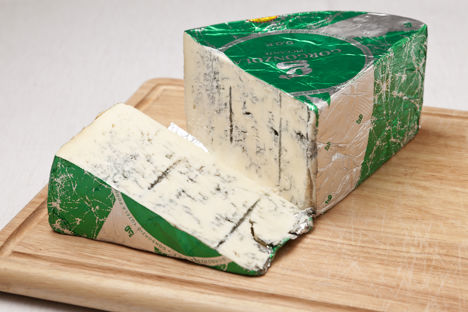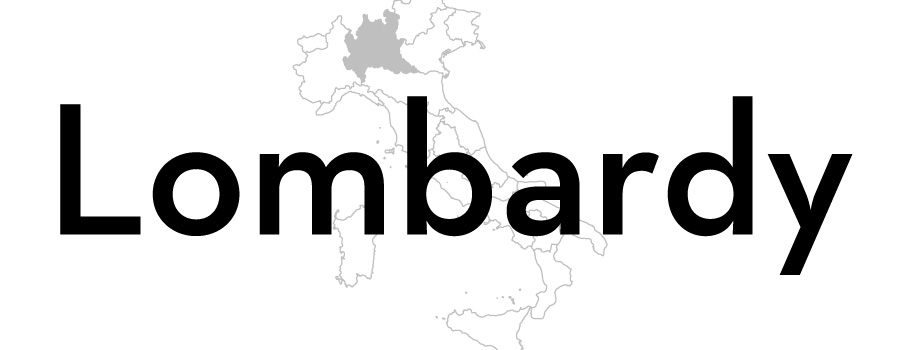
The cheeses of Lombardy
Few Italian provinces have the cheese pedigree that Lombardy has – the mountainous region is home to countless cheeses which rank among the country's finest. Take a look at ten of the most famous.
Wherever you travel in Italy, you’ll find cheeses by the bucketload – this is a nation that adores cheese just as much as the rest of Europe. Although we’re drawn to the same old faces when we think of Italian cheese – Parmesan, mozzarella, pecorino and others – there are hundreds upon hundreds of lesser-known cheeses made across the country that are well worth trying, should you come across them.
Lombardy is one of Italy’s most prolific cheesemaking regions and home to some of Italy’s most famous cheeses – both Grana Padano and mascarpone, for example, originated in Lombardy before spreading across the country – as well as some less common diamonds in the rough. The climate of Lombardy plays a big part in this. In the north you have the Valtellina Valley and in the northeast are Lake Como and Lake Garda, where the nutrient-rich alpine pastures make for unique mountain cheeses. Head down into the plains around Brescia, Milan and south towards the Po River, and you’ll find a different class of cheeses – whether it’s rich blue from the famous town of Gorgonzola, or mascarpone from the Po Valley.
Lombardy knows the value of its dairy tradition and protects it fiercely. Not only is there the Slow Food Presidium in place to protect smaller cheese makers and methods, the government also has a hand in maintaining Lombard cheese traditions – there are now thirteen PDO-protected cheeses in Lombardy (with even more applying for protection). There’s no question that Lombardy is a cheese-lover’s dream, which is why we’ve pulled together ten of our favourite cheeses from this beautiful northern province.
Gorgonzola
We’re well acquainted with Gorgonzola in the UK and Europe, but we rarely think about where it comes from. Well, perhaps unsurprisingly, it originates in the town of Gorgonzola, just a few miles west of Milan. This soft, creamy blue is one of the oldest blue cheeses in the world and remains one of the most popular. These days you’ll find lots of variations, from the mild and sweet Gorgonzola Dolce to the sharper Gorgonzola Piccante – they’re all significantly different in their own ways. Our advice? Try them all.
Taleggio
Way up in the mountainous caves around Val Taleggio, Taleggio is made every autumn and winter using pasteurized cow’s milk from the alpine pastures. The cheese is matured in caves and washed once a week with seawater to control the surface bacteria. This washing of the rind is what gives Taleggio its pungent smell, but the cheese itself is actually very mild, with a distinctive fruity tang which makes it good in salads or melted into risotto or polenta.
Bitto
A signature cheese of the Valtellina Valley, Bitto is named after the nearby Bitto River. Bitto is only produced in the summer – when grass appears on the alpine meadows of Valtellina, farmers let their cow’s out to feed and use the milk to make Bitto. The cheese is made from cow’s milk, but with 10–20% of goat’s milk added, which allows Bitto wheels to be aged for up to an incredible twenty years. Keep an eye out for Bitto Ribelle, which is still produced via the ancient methods practiced many years ago.
Bella Lodi
Often known as ‘Black Parmesan’ thanks to its jet-black rind, Bella Lodi is one of the more unusual cheeses that comes from Lombardy’s southern plains. It remains quite a rare find, as it’s only made by one dairy in the South Adda Regional Park. The cheeses are matured for eighteen months before the rind is coated in clay, grapeseed oil and carbon to create that distinctive rind, with a flavour and texture that is reminiscent of an aged Parmesan.
Bagoss di Bagolino
Northwest of Brescia not far from the shores of Lake Garda is Bagolino – home of the popular Bagoss di Bagolino cheese. Bagoss is only made in small quantities by dairies in the commune of Bagolino, with much of it being exported around the world and sold for a hefty sum. The cheese is made using raw cow’s milk and aged for anywhere between twelve and thirty-six months. Cheesemakers traditionally add a teaspoon of saffron to the curd to give the final cheese a deep golden hue, whilst the rind is rubbed with raw linseed oil.
Valtellina Casera
This delicate cow’s cheese is well regarded all over Italy and, like Bitto, it’s a symbol of Lombardy’s cheesemaking excellence. The name comes not only from the Valtellina Valley where the cheese has always been made, but also from the large stone ‘casere’, where the cheeses are often still matured. Producers take semi-skimmed milk from alpine cattle and allow it to sit for half a day before skimming, curdling and salting the cheese. Valtellina Casera is typically aged for seventy days, at which point it is ready to eat – the sweet, delicate flavour works well with the buckwheat pasta that's typical of northern Lombardy.
Pannerone
The name Pannerone is said to originate from the Italian ‘panera’, which means cream, but it could equally be derivative of ‘pane’ (bread), as it has an open, hole-filled texture that often resembles a loaf of bread. Pannerone originates just to the southwest of Lodi in Caselle Lurani, and is made using additional cream and milk fat without salt, which gives it a very soft, creamy finish with bittersweet notes.
Formai de Mut dell’Alta Val Brembana
Literally translating as ‘mountain cheese’ in local dialect, you’ll see Formai de Mut fairly commonly across the north of Lombardy, but the cheese made in Val Brembana – just across the valley from Val Taleggio – is one of the best examples. Unusually for a cow’s milk cheese, Formai de Mut is often eaten fresh, but it can also be ripened for a couple of months before being eaten with fresh fruit, bread and full-bodied red wines, like those from nearby Alba and Barolo.
Quartirolo Lombardo
Quartirolo Lombardo can only be produced in a small area between the Po Valley and the pre-alpine city of Bergamo. Unlike the bright yellow cow’s cheeses produced in the mountains, Quartirolo Lombardo is chalky and white, which darkens to a pale straw colour after two months of ripening. The flavour is mild with a slight sourness, but the flavour becomes stronger as the cheese ripens, developing a more savoury, tangy character.
Fatulì della Val Saviore
This raw milk goat’s cheese is certainly one of the least common in all of Lombardy – it’s produced by a single dairy in the far north of the mountains, past Lake Garda in Val Saviore. Traditionally made using the milk of blonde dell’Adamello goats, the cheese curd is drained, salted and then smoked with juniper wood, before being aged for up to six months. As the cheese ages it becomes more intense, developing herbaceous and dried fruit notes as well as a smoky character.

